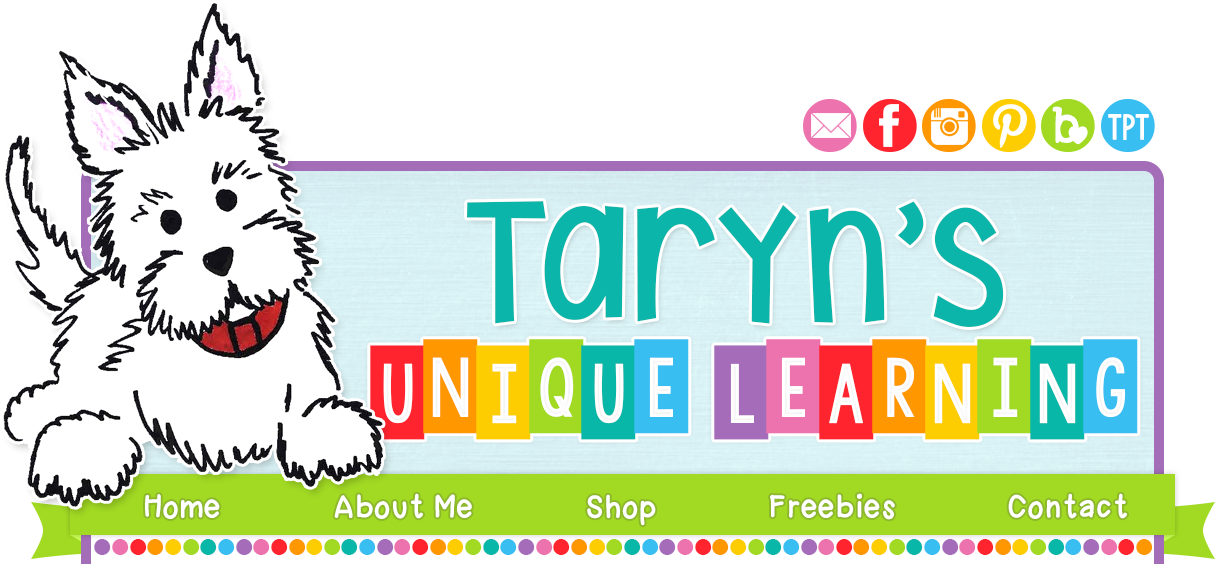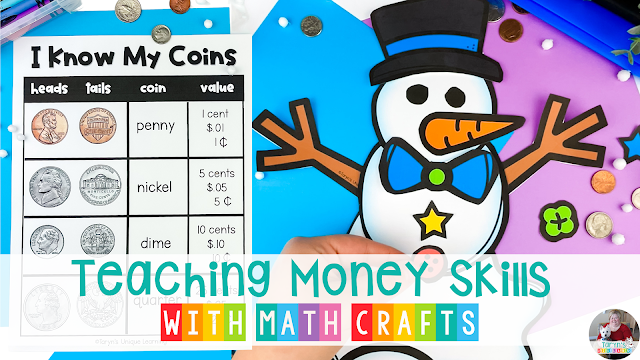The Importance of Money Skills for Primary Learners
Learning to recognize coins, recall their value, count them up, and make change is undeniably important for our little learners!
 Luckily, this topic tends to be well-received in the classroom. This is so helpful since we all know that when students are engaged in learning, they gain so much more from our lessons! Aside from the obvious, mathematical benefits of learning to count coins, students will also gain financial skills from money lessons too.
Luckily, this topic tends to be well-received in the classroom. This is so helpful since we all know that when students are engaged in learning, they gain so much more from our lessons! Aside from the obvious, mathematical benefits of learning to count coins, students will also gain financial skills from money lessons too. Teaching children to count their money, assess its value, and carefully plan for purchases is such an important lesson.
One of the reasons money skills are so engaging for students is because they involve choice. We all know that little learners love being given choices and options. When we present them with an opportunity to decide what they'd like to spend their very own money on, the anticipation soars!
Introducing Money Skills
Before we dive into my favorite way to master money skills, let's get down to the basics of teaching students about money values. Your school likely has standards and curriculum for working with money in your math lessons. Most of us are required to use these materials, but I think it's safe to say that we often like to add in our own supplemental resources too! The extra resources are usually much more fun for students, encouraging enhanced engagement and participation.
In my room, books are always on the lesson plan when it comes to introducing new topics. This is certainly true with money skills as well. I like to use a few read-alouds to introduce the concept of coins and dollar bill values to students. Some of my favorites include:
- The Coin Counting Book by Rozanne Lanczak Williams
- My First Book of Money Basics by Sara Kale
- Everything Money (Nat. Geo Kids) by Kathy Furgang
These books provide a basic overview of financial literacy topics, as well as information about how much each coin is worth. I like to read them aloud in the mornings before we dive into deeper lessons on working with coins. These will be a great complement to the math curriculum you're already required to use with your kiddos.
Real-World Application of Money Skills
Alright friends, ready to take your lessons to the next level? Once your students have some baseline knowledge of money, it's time to put practice into play! Money skills are already fun, but when we let students use them in action, we've got a recipe for success!
In my classroom, one of my absolute favorite ways to work on money skills throughout the year was with seasonal math crafts. And, it was definitely something my students looked forward to as well!
Each season, we'd set aside some time to transform the classroom into a marketplace with multiple shopkeepers selling pieces of our craft materials. The idea here is that students will move from "shop" to "shop" and purchase pieces to build their craft.
In order to make this work, you'll need to do a little planning ahead and utilize parent volunteers, support staff, or even older children to help manage the shops. But, trust me - this is well worth the time and effort to organize! Your students will look forward to your money skills crafting days and have SO much fun along the way.
Planning the Activity
As I mentioned, we used these activities throughout the year for different seasons, holidays, and themes. For example, in the winter months, our craft was a silly snowman that everyone loved. When it was time to plan one of our money skills crafting days, I liked to collaborate with other teachers and see if they had any students they'd like to lend out as classroom helpers.
This is a great opportunity for older children to practice patience and cooperation with the little ones. Another option is to ask support staff or parent volunteers to help out. The money-exchange portion of the activity will probably take 30 minutes or so, depending on the size of your class. If your volunteers can stay to help with the crafting portion of the activity - even better!
The additional prep work includes printing out craft pieces on colored or white cardstock. There are full-color options as well as blackline. I like to print them out ahead of time and then roughly cut the paper into pieces across the dotted lines. Students will do the final cutting when it's time to assemble.
Oh, and we can't forget the coins! You'll need to gather up enough coins for each child to borrow for the lesson as well as plastic cups or small containers to keep track of them as they move throughout the classroom.
Using Money Skills to Buy Craft Pieces
Once you're ready to begin, students will each be given a cup of change in the same amount. You can use plastic coins or real ones, whichever you prefer. Then, each volunteer will work as a "shopkeeper" and have different types of craft pieces available for sale.
Students will read the price list, choose what coins they need from their cup, and pay for the necessary materials with the help and guidance of the volunteers. Each craft has required pieces, as well as optional pieces, so students will need to budget accordingly to make sure they have enough money to pay for all of their pieces.
Keep in mind that the first time you use this activity, you might need to slow things down a bit and provide a few example transactions. This will be helpful for your students as well as the volunteers! Once you've done this activity a few times though, I think you'll find that this activity flows quite easily with young students.
As children progress, you can differentiate the activity to be more difficult with increased prices, varied "menus", and even different types of coins. Younger students might work exclusively with pennies and nickels, while older kiddos will use all coins. You can even discreetly pass out pre-made coin cups to correspond to the skill level. Since kiddos will be buying their craft pieces independently, no one needs to know who has what. This makes it fun and easy to continue practicing money skills all year long and with a variety of skill levels.
Assembling the Craft
After the money skills lesson is complete and all of your children have purchased their pieces, it's time to craft! Students will work to cut out their pieces, color if necessary, and assemble their craft. If your volunteers are still available, they can circulate in the classroom and assist as necessary.
You can even take this a step further and incorporate some writing skills as well! Simply have your students write a short story about their snowman and how much it "cost" to build it. You can also have them count how many pieces they needed to build the snowman. Another option is to ask them why they chose to decorate him the way they did.
No matter what you choose, this is a fun way to incorporate money skills, counting, fine motor practice, following directions, and even writing if you so choose. Talk about an all-in-one activity!
When everyone is done, I like to display these on a bulletin board. Everyone is proud to show off their work and in turn, we have a fun and festive seasonal bulletin board for everyone to see! Since we use these seasonally, I know that I have at least one bulletin board covered - which is one more added plus!
Practice Money Skills All Year Long
So what do you think friends? Would you use this money skills math craft in your room? This was certainly a hit with my kiddos and we always looked forward to this special day each season. If you want to take a closer look at these resources be sure to check the holiday and seasonal options in my TPT Shop:
There's a little something for everyone in these bundles, and I know you and your students will love completing one of these crafts during each season. Plus, it's so much fun to watch your students grow in their money skills throughout the year!
Save These Math Crafts!
This post is a fun way to mix up your classroom math lessons. Pin this post on Pinterest to keep these money skills math crafts handy!



.png)
.png)
.png)
.png)
.png)



Using money skills in the classroom can be super engaging for kids! The idea of making purchases and counting coins is exciting. Have you ever tried incorporating an Online Math Tutor into your lessons? It could add an extra layer of fun while learning important skills!
ReplyDeleteThis worked well for me when I was in the classroom. My kids loved buying and building. And I loved that they were getting practice counting money and making change. Thanks John!
Delete